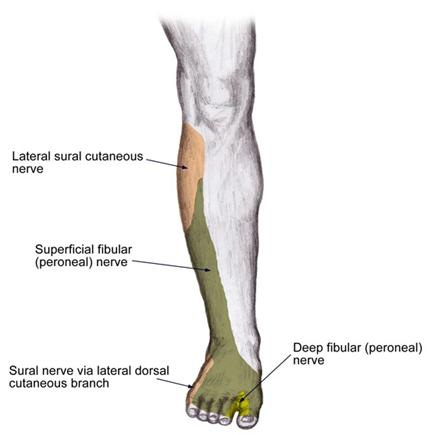NEURAL PATHWAY
Deep peroneal nerve (deep fibular nerve): is one of the branches of the common peroneal nerve (aka common fibular nerve)
Dorsal branches of L4,L5,S1,and S2 →1st and 2nd sacral nerves (sacral plexus) → sciatic nerve → common peroneal→deep peroneal nerve

*This nerve branches into the lateral and medial terminal branches
FUNCTION
Motor: this nerve controls foot dorsiflexion. It innervates the tibialis anterior, extensor digitorum longus, peroneus tertius, and extensor hallucis longus (propius)
- Lateral branch: innervates the extensor digitorum brevis and the extensor hallucis brevis
Sensory: this nerve controls sensory innervation between the first and second digits of the toe (via its medial terminal branch)
CAUSE OF INJURY
Direct damage or compression of the nerve can cause issues (no common specific causes identified YET for this page). Damage to the common peroneal nerve will lead to loss of this nerve’s function.
CLINICAL PRESNENTATION
Inability to dorsiflex: the characteristic presentation of damage to this nerve is “foot drop” because of paralysis to the tibias anterior muscle (which mediates dorsiflexion). Patients will compensate for this with a “stepping gait” (foot is lifted high off the ground). This gait is associated with the foot slapping down on the ground (with each step) because the patient can not gently lower the forefront of the foot.

Loss of sensation to the first toe webspace: patients will be unable to sense stimuli in this area of the foot.

OTHER INFO
Page Updated: 01.23.2016